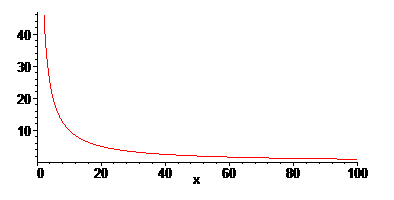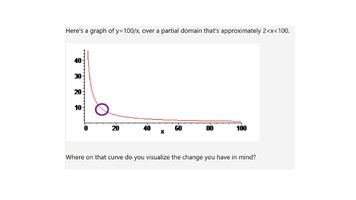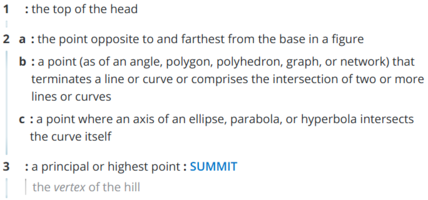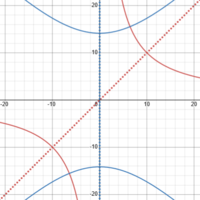Brook Lake
New member
- Joined
- Jan 26, 2023
- Messages
- 4
Dear Math Friends:
The equation of interest is: y=100/x. The curve has y=0 and x=0 asymptotes. I am trying to figure out the value of x at which the graph curves from the x asymptote to the y. In layman's terms, this would be the 'vertex' of the curve. I am basically trying to figure out the value of x at which the change in y begins to change more rapidly.
Can someone help?
Thanks!
Best wishes,
Brook
The equation of interest is: y=100/x. The curve has y=0 and x=0 asymptotes. I am trying to figure out the value of x at which the graph curves from the x asymptote to the y. In layman's terms, this would be the 'vertex' of the curve. I am basically trying to figure out the value of x at which the change in y begins to change more rapidly.
Can someone help?
Thanks!
Best wishes,
Brook





